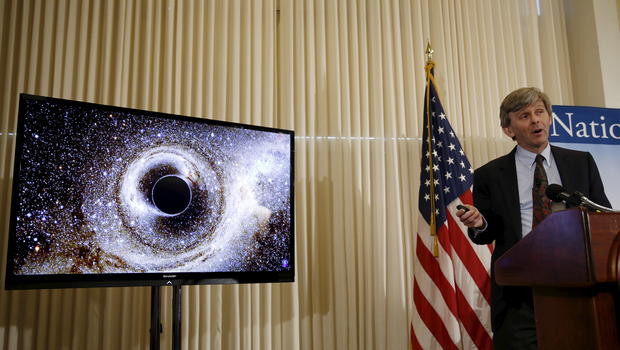LOS ANGELES, June 15 (Xinhua) -- Four months after the historic first-ever detection of gravitational waves, scientists said Wednesday they have directly detected another gravitational wave washing over the Earth.
The gravitational waves, ripples in the fabric of spacetime, were observed for a second time on Dec. 26, 2015, in the United States.
"Despite these being so tiny, these LIGO (Laser Interferometer Gravitational-Wave Observatory ) instruments on Earth detected very clearly these gravitational waves," Gabriela Gonzalez, the LIGO scientific collaboration (LSC) spokesperson, told a press conference held by the American Astronomical Society in San Diego, California.
"We are very proud of this being the beginning of gravitational wave astronomy," Gonzalez said. The discovery has been accepted for publication in the journal Physical Review Letters.
Like the first detection, scientists said that the incredibly faint ripple that eventually reached the Earth was the result of the spinning dance of a binary black hole pair on the brink of merging.
This time, the black holes weighed in at 14 and 8 solar masses and merged to form a single, spinning 21-solar-mass black hole, some 1.4 billion light years away. The collision and subsequent merger released approximately one solar mass of energy, which was radiated away as gravitational waves.
The first detection of gravitational waves, announced on Feb. 11, 2016, was a milestone in physics and astronomy. It confirmed a major prediction of Albert Einstein's 1915 general theory of relativity and marked the beginning of the new field of gravitational wave astronomy.
LIGO's historic first detection on Sept. 14, 2015, resulted from a merger of two black holes that were much larger, carrying 36 and 29 solar masses respectively.
With these two confirmed detections, along with a third likely detection made in October 2015, which is also believed to be caused by a pair of merging black holes, scientists can now start to estimate the rate of black hole coalescences in the Universe based not on theory, but on real observations. ( According to LIGO, its next observing interval will start in the Fall of 2016. With improved sensitivity, scientists expect to see more black hole coalescences, and possibly detect gravitational waves from other sources, like binary neutron-star mergers.
"Gravitational waves astronomy is real and we are here," David Reitze, executive director of the LIGO Laboratory at Caltech, said.
">